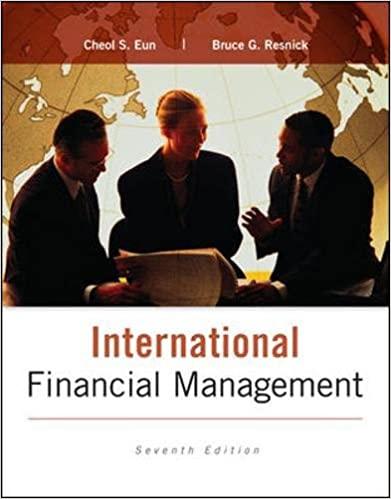Question
A manufacturing system consists of five workstations, and at present stations 1, 2, 5 consist of 3, 2, 4, 3, and 1 identical machine(s), respectively,
A manufacturing system consists of five workstations, and at present stations 1, 2, 5 consist of 3, 2, 4, 3, and 1 identical machine(s), respectively, as shown. In effect, the system is a network of five multiserver queues. Assume that jobs arrive at the system with interarrival times that are IID exponential random variables with mean 0.25 hour. There are three types of jobs, and arriving jobs are of type 1, 2 and 3 with respective probabilities 0.3, 0.5, and 0.2. Job types 1, 2, and 3 require 4, 3, and 5 tasks to be done, respectively, and each task must be done at a specified station and in a prescribed order. The routings for the different job types are:
| Job Type | Workstation Routing |
| 1 | 3, 1, 2, 3 |
| 2 | 4, 1, 3 |
| 3 | 2, 5, 1, 4, 3 |
Thus, type 2 jobs first have a task done at station 4, then have a task done at station 1, and finally have a task done at station 3 (See Figure).
If a job arrives at a particular station and finds all machines in that station already busy, the job joins a single FIFO queue at that station. The time to perform a task at a particular machine is an independent 2-Erlang random variable whose mean depends on the job type and the station to which the machine belongs. (If X is a 2-Erlang random variable with mean r, then X = Y1 + Y2, where Y1 and Y2 are independent exponential random variables each with mean r/2. Alternatively X is known as a gamma random variable with shape parameter 2 and scale parameter r/2. See page 605 for further details.) We chose the 2-Erlang distribution to represent service times because experience has shown that if one collects data on the time to perform some task, the histogram of these data will often have a shape similar to that of the density function for an Erlang distribution. The mean service times for each job type and each task are:
| Job Type | Mean service times for successive tasks, hours |
| 1 | 0.5, 0.60, 0.85, 0.50 |
| 2 | 1.10, 0.80, 0.75 |
| 3 | 1.20, 0.25, 0.70, 0.90, 1.00 |
Thus, a type 2 job requires a mean service time of 1.10 hours at station 4 (where its first task will be done).
Assuming no loss of continuity between successive days' operations of the system, simulate the system for 365 eight-hour days and estimate the expected average total delay in queue (exclusive of service times) for each job type and the expected overall average job total delay. Use the true job-type probabilities 0.3, 0.5, and 0.2 as weights in computing the latter quantity. In addition, estimate the expected average number in queue, the expected utilization, and the expected average delay in queue for each station.
Suppose that all machines cost approximately the same and that the system has the opportunity to purchase one new machine with an eye toward efficiency improvement. Use the results of the above simulation to decide what additional simulation runs should be made. (Each of these new runs will involve a total of 14 machines, being 1 more than the original number.) From these additional runs, use the overall average job total delay to help decide what type of machine the system should purchase.

Step by Step Solution
There are 3 Steps involved in it
Step: 1

Get Instant Access to Expert-Tailored Solutions
See step-by-step solutions with expert insights and AI powered tools for academic success
Step: 2

Step: 3

Ace Your Homework with AI
Get the answers you need in no time with our AI-driven, step-by-step assistance
Get Started


